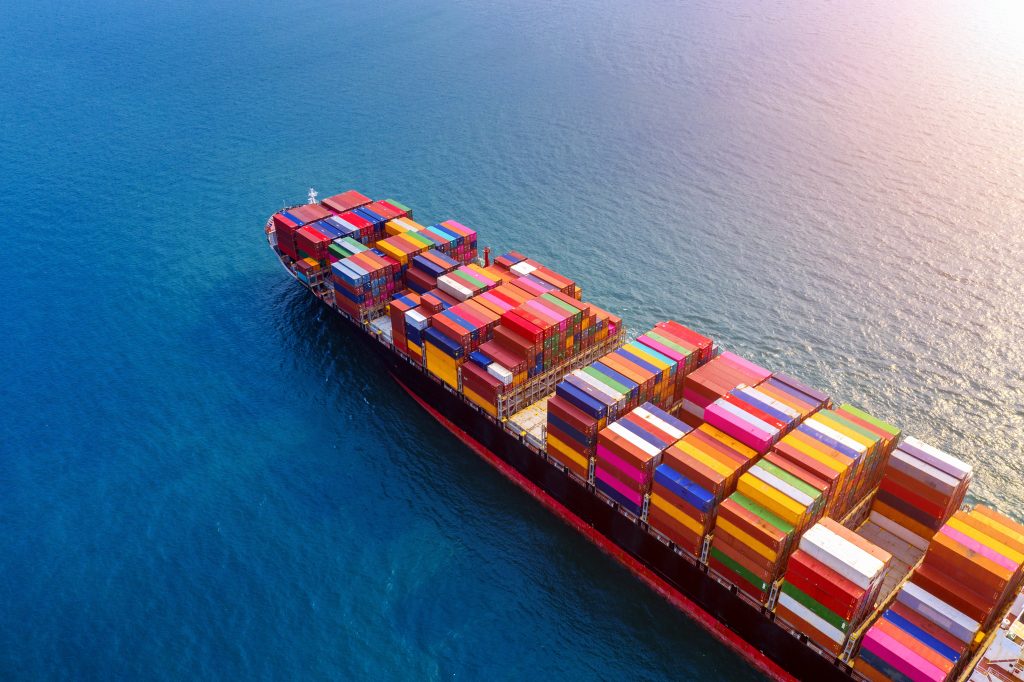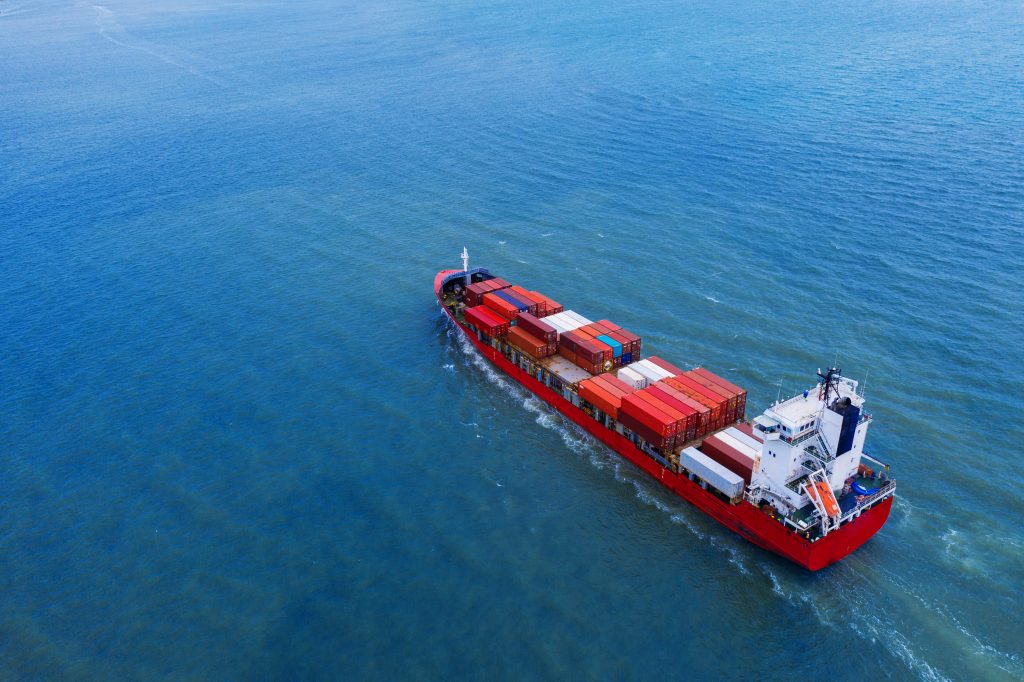
Shipping costs have risen sharply and fierce competition for ocean freight capacity is the new normal. With new capacity only slowly coming on stream, freight rates are expected to continue to reach new highs this year and will remain above their pre-pandemic levels in the longer term
No short-term relief
Shipping costs have been growing strongly since the autumn of 2020, but the first months of this year have seen a new surge in prices across different freight rates (dry bulk, containers) along major trade routes. Prices for several trade lanes have tripled compared to last year, and charter prices for container vessels have seen similar rises.
There is little sign of relief in the short term, and rates are therefore likely to continue spiking in the second half of this year, as rising global demand will continue to be met with limited increases in shipping capacity and the disruptive effects of local lock downs. Even when new capacity arrives, container liners may continue to be more active in managing it, keeping freight rates at a higher level than before the pandemic.
Here are five reasons why costs aren’t going to come down anytime soon.
1. Continued global imbalances push prices up further
Problems that had built up from the beginning of the pandemic have included imbalances in the production and demand for goods, with countries locking down and opening up at different times, as well as shipping companies cutting the capacity on major routes and shortages of empty containers. As the recovery has progressed, global demand has recovered strongly, especially in the sectors which are most closely linked to international trade in goods. Competition for ocean freight capacity has intensified as economies open up further and inventories are rebuilt across the several links of supply chains.
2. Few alternatives to ocean freight
A lack of alternatives to ocean freight means it’s hard to avoid surging transport costs at the moment. For higher value products, alternative modes of transportation would normally be an option, such as the shipment of electronic devices by air or via train, not least through the ‘Silk Road’. But capacity is currently limited, and tariffs have spiked as well. Shippers of lower value products such as household items, toys, promotional articles or t-shirts have seen freight costs increase from around 5% of their sourcing costs to more than 20%.
The difficulty of absorbing increases on this scale in margins means that consumers may start to feel the impacts through price increases, or changes in product availability.
3. An unbalanced recovery throughout 2021
Some countries are already exporting more goods than they did before the pandemic, while in others, including the US, exports continue to lag behind the overall recovery in output. Trade in goods will rise further while not only the major trading countries, but also their trade partners, continue recovering. With the competition for ocean freight capacity set to remain, the unbalanced recovery will continue to exacerbate some of the problems for world trade, including displaced empty containers. It all adds up to more pressure on freight rates in the near term.
4. Reduced blank sailings will help ease capacity constraints
Globally, capacity on major shipping routes has recovered to levels before the major lockdowns in 2020, although blank sailings (cancelled port calls) continued to cut 10% of scheduled capacity through the first quarter. There are signs of improvement this quarter, which on current plans will average at 4%. But cancellations have partly been a response to delays, so while the system remains congested, shipping capacity may continue to be taken out of the system at short notice.
5. Port congestion and closures keep creating delays
As the link between cancelled sailings and delays suggests, congestion is part of the problem. Shipping performance in 2021 has carried on where 2020 left off, in terms of lower rates of vessels keeping to schedule, and average delays for late vessels rising. There are some signs that average performance will start to improve as the share of vessels reaching their destinations on time stopped sliding in April, and average delays improved. But overall performance remains the lowest it has been in ten years of records.
At the same time, the pandemic is still leading to disruptions, like the sudden closing of China’s Yantian container port – part of the world’s 4th largest container port Shenzhen – in early June. Even though operations have resumed, congestion and the continuing need for measures to stop the spread of Covid-19 mean delays continue to mount. Although China and other major trading countries are making progress with vaccination programmes, creating immunity will take time and consequently handing interruptions will remain a risk over the coming months.
Flood of new container capacity will ease price pressures, but not before 2023

Container liners have enjoyed outstanding financial results during the pandemic, and over the first 5 months of 2021, new orders for container vessels reached a record high of 229 ships with a total cargo capacity of 2.2 million TEU. When the new capacity is ready for use, in 2023, it will represent a 6% increase after years of low deliveries, which the scrapping of old vessels is not expected to offset. Along with global growth moving past the catch-up phase of its recovery, the coming increase in ocean freight capacity will put downward pressure on shipping costs but won’t necessarily return freight rates to their pre-pandemic levels, as container liners seem to have learned to manage capacity better in their alliances.
In the near term, freight rates may yet reach new highs thanks to the combination of further increases in demand and the constraints of a congested system. And even when capacity constraints are eased, freight rates may remain at higher levels than before the pandemic.
Tags :
Knowledge & Stories| M | T | W | T | F | S | S |
|---|---|---|---|---|---|---|
| 1 | 2 | |||||
| 3 | 4 | 5 | 6 | 7 | 8 | 9 |
| 10 | 11 | 12 | 13 | 14 | 15 | 16 |
| 17 | 18 | 19 | 20 | 21 | 22 | 23 |
| 24 | 25 | 26 | 27 | 28 | 29 | 30 |
| 31 | ||||||
Recent Posts
- Ultimate Guide to UV Printing: Insider Tips and Tricks
- Before You Invest: Choosing a Large Format Flatbed Printer
- Maximizing Brilliance: Mastering UV Printer Settings for Optimal Media Reflectivity
- The advantages of using a WER UV printer for large format printing (2)
- Achieve Stunning Results in Home Décor and Architectural Design with UV Printer
Archives
- January 2025
- November 2024
- September 2024
- March 2024
- December 2023
- November 2023
- October 2023
- May 2023
- March 2023
- February 2023
- January 2023
- December 2022
- November 2022
- October 2022
- September 2022
- February 2022
- January 2022
- December 2021
- November 2021
- October 2021
- September 2021
- August 2021
- July 2021
- June 2021
- May 2021
- April 2021
- March 2021
- February 2021
- January 2021
- December 2020
- November 2020
- October 2020
- September 2020
- August 2020
- July 2020
- June 2020
- May 2020
- April 2020
- March 2020
- February 2020
- January 2020
- December 2019
- November 2019
- October 2019
- September 2019
- August 2019
- July 2019
- June 2019
- May 2019
- April 2019
- March 2019
- February 2019
- January 2019
- December 2018
- November 2018
- October 2018
- September 2018
- August 2018
- July 2018
- June 2018
- May 2018
- April 2018
- March 2018
- February 2018
- January 2018
- December 2017
- July 2016
- June 2016
Recent Posts
- Ultimate Guide to UV Printing: Insider Tips and Tricks
- Before You Invest: Choosing a Large Format Flatbed Printer
- Maximizing Brilliance: Mastering UV Printer Settings for Optimal Media Reflectivity
- The advantages of using a WER UV printer for large format printing (2)
- Achieve Stunning Results in Home Décor and Architectural Design with UV Printer